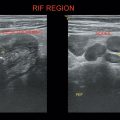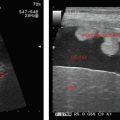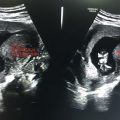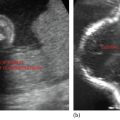Critical Care Ultrasound—Including FAST (Focused Assessment with Sonography in Trauma)
Role of ultrasound in the assessment and management of hemodynamic instability has been discussed.
RUSH PROTOCOL (RAPID ULTRASOUND IN SHOCK)
Evaluation of critically ill patients (hypovolemic/cardiogenic/obstructive shock)
It includes evaluation of
Heart: Effusions and myocardial contractility
Aorta: Dissections and aneurysms
IVC: Volume status
Pleural fluid and pneumothorax
Fluid in the Morrison’s pouch
FATE PROTOCOL (FOCUSED ASSESSMENT BY TRANSTHORACIC ECHOCARDIOGRAPHY)
Exclude any obvious pathology.
Assess wall thickness, contractility, and chamber dimensions (mainly eyeball technique is used).
Clinical correlation is imperative.
Mitral valve hitting the septum is a normal marker of the left ventricle function.
Dyskinetic septum suggests severely reduced left ventricular function.
Normally RV < LV (two-third the size)
RV = LV (moderately enlarged size)
RV > LV (massive enlargement)
In a subxiphoid view, pericardial effusion in a patient with hypotension, tachycardia, and muffled heart sounds suggestive of right ventricular diastolic collapse.
Enlarged right ventricle.
McConnell’s sign—right ventricular lateral wall akinesis along with apical sparing.
Paired superficial femoral and deep femoral arteries.
Deep femoral vein is not routinely seen on sonography due to small caliber.
Common femoral vein courses with paired femoral arteries.
Compressibility: Noncompressible femoral vein.
Augmentation: Normally vein fills with color and thrombus will not, on compressing distal part of the leg.
Stay updated, free articles. Join our Telegram channel

Full access? Get Clinical Tree








